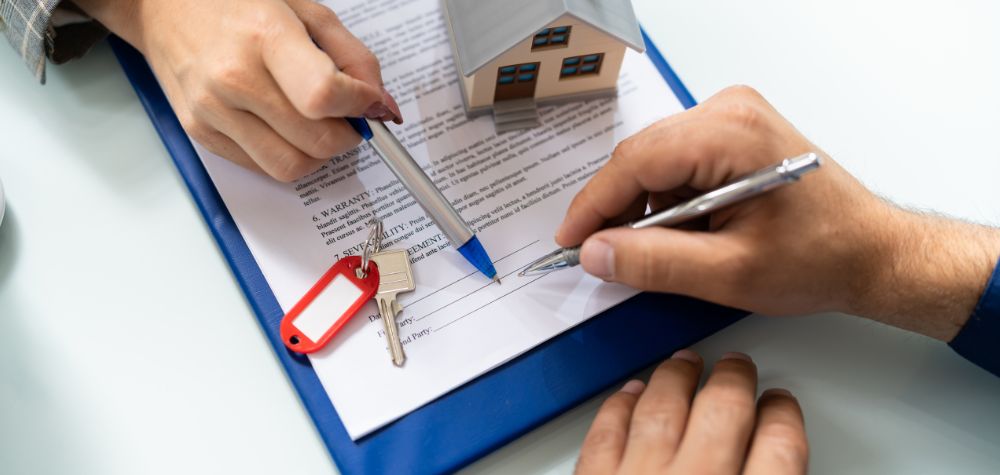Buying Property? Here’s 8 Costs That Could Catch You Off Guard

Buying a property is an exciting milestone, but it’s also one of the most significant financial decisions you’ll make.
While most people are prepared for the big-ticket items like the deposit and mortgage payments, there are several other costs that can catch you off guard if you’re not aware of them.
To help you avoid any surprises, here’s a look at some of the less obvious costs associated with purchasing a property.
1. Stamp Duty—The Big One That’s Easy to Overlook
Stamp duty is one of the largest upfront costs when buying a property, yet it often flies under the radar for first-time buyers. This government tax is based on the purchase price of the property and varies depending on the state or territory you’re buying in.
For example, if you’re purchasing a home for $600,000 in Victoria, the stamp duty could be over $30,000. That’s a significant amount of money that needs to be factored into your budget early on. Some states offer concessions or exemptions for first-home buyers, so it’s worth checking if you’re eligible for any reductions.
2. Legal and Conveyancing Fees—Getting the Paperwork Right
You’ll need a solicitor or conveyancer to handle the legal aspects of your property purchase, including reviewing the contract of sale, conducting property searches, and ensuring the title is transferred correctly. Legal and conveyancing fees can vary but typically range from $1,500 to $3,000.
This cost is essential to ensure everything is above board, but many buyers forget to account for it. Remember, this is an investment in peace of mind, ensuring no nasty surprises after you’ve committed to buying the property.
3. Building and Pest Inspections—Essential for Peace of Mind
Before finalising the purchase, it’s crucial to have a building and pest inspection done. These inspections can reveal hidden issues like structural damage, termite infestations, or other problems that aren’t visible during a regular viewing. The cost for these inspections usually ranges between $400 and $800, depending on the property size and location.
While it might seem like an added expense, it’s a small price to pay compared to the potential costs of repairs if these issues go unnoticed. Knowing what you’re getting into is better before you sign on the dotted line.
4. Lenders Mortgage Insurance (LMI)—A Cost for Low-Deposit Buyers
If you’re borrowing more than 80% of the property’s value, you’ll likely need to pay Lenders Mortgage Insurance (LMI). This insurance protects the lender in case you default on your loan, but it’s a cost that you, the borrower, are responsible for.
LMI can be pretty expensive, often running into the thousands, depending on the size of your loan and the deposit you’ve saved. For example, if you’re buying a property for $500,000 with a 10% deposit, your LMI could be around $8,000. This is an added expense that’s often rolled into your loan, meaning you’ll pay interest on it over time.
5. Strata Fees—Ongoing Costs for Apartment Owners
If you’re buying an apartment, townhouse, or unit in a complex, you’ll likely need to pay strata fees (also known as body corporate fees). These fees cover the cost of maintaining common areas, building insurance, and sometimes even utilities like water or gas.
Strata fees can vary widely depending on the property and amenities. A high-end complex with a pool, gym, and concierge service will have higher fees than a simple block of units. It’s important to factor in these ongoing costs when considering your budget, as they can add up over time.
6. Moving Costs—Getting Your Life from A to B
Moving house is more than just packing boxes and loading a truck. Costs are associated with hiring professional movers, renting a truck, and even purchasing packing materials. Depending on the distance and size of the move, these costs can range from a few hundred to several thousand dollars.
Additionally, if you’re moving into a new building or a home without appliances, you might need to budget for essentials like a refrigerator, washing machine, or curtains—costs that are easy to overlook in the excitement of buying a new place.
7. Utility Connection Fees—Getting the Lights On
When you move into a new property, there are often fees associated with connecting utilities like electricity, gas, water, and internet. While these fees are typically not exorbitant, they’re another cost to be mindful of, especially if you’re setting up multiple services at once.
Some utility providers may offer discounts or waive fees for new customers, so it’s worth shopping for the best deals. However, be prepared to spend a few hundred dollars getting everything connected and running smoothly.
8. Council Rates and Ongoing Maintenance—The Cost of Ownership
Once you’ve settled into your new home, you’ll be responsible for ongoing costs like council rates, which cover local services such as waste collection, road maintenance, and public amenities. Council rates vary depending on the property’s location and value, so factoring these into your budget is essential.
Additionally, homeownership comes with the responsibility of maintenance and repairs.
Whether fixing a leaky tap, replacing a broken window, or maintaining the garden, these costs can add up over time. It’s wise to set aside a maintenance fund to cover these expenses as they arise.
Buying a property is a significant financial commitment, and while the deposit and mortgage payments are top of mind, many other costs can quickly add up.
Awareness of these hidden expenses can help you plan more effectively and avoid any financial surprises.
From stamp duty to strata fees and building inspections to moving costs, it’s essential to budget for the full range of costs associated with purchasing a property. By understanding and preparing for these expenses, you’ll be better positioned to enjoy your new home without the stress of unexpected bills.




